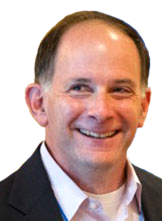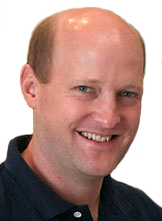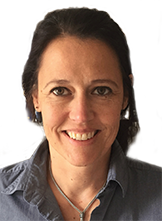Reconfigurable Computing for the Masses, Really?
New opportunities and long-standing challenges of a disruptive technology.
A workshop at and after FPL'15 to engage the research community to identify and understand the issues that must be addressed to enable the use of reconfigurable arrays by mainstream software programmers.
4th September 2015
Overview
Reconfigurable computing, or the use of fabrics such as FPGAs to accelerate computing tasks normally run on conventional general-purpose processors, has been around almost as long as FPGAs themselves. Yet, very few FPGAs populate data centres, even less are on acceleration boards in our PCs, and none are in our laptops and tablets. We are now witnessing a new and exciting inflection point in the use of FPGAs: they are now being viewed as potentially viable commercial off-the-shelf components directly in the path of software developers. Microsoft recently revealed Catapult, a server with FPGAs soon to be in use in large data centres to accelerate their Bing search engine. Intel also announced a new compute node that will integrate an FPGA with a large Xeon multicore processor. These types of announcements show industrial commitment to accelerate the transition of FPGAs into new application domains dominated by software programmers.
Enabling software developers to apply their skills over FPGAs has been a long and, as of yet, unreached research objective in reconfigurable computing. In the past our inability to reach this goal did not greatly impact the adoption of FPGAs within the traditional markets of embedded and networking systems. The manufactures of these systems employed sufficient numbers of hardware and system design engineers with skill sets in low level programming and custom hardware design. The additional engineering effort and extended time to market required to tune an FPGA to gain peak performance was an acceptable system development cost. This is clearly not an option when FPGAs are to be integrated in conventional computing equipment where short time to market and repeated updates to software are core to these companies' business models.
But obstacles to widespread FPGA adoption go well beyond the required skill set. Another major obstacle is the total lack of standardization. To start a serious programming project, one can simply use any commodity laptop as a first platform, install any of several available operating systems including several perfectly solid free options, use some typically fairly robust programming environment in a language of choice, and leverage amazing amounts of free middleware. A moderately experienced software programmer can be evaluating and testing basic ideas literally within hours from project start. Contrast this with someone interested to accelerate a computing job with FPGAs: devices across vendors are fundamentally different and incompatible; RTL programs, albeit in principle portable, are definitely not; development software is completely vendor specific, with very significant differences in feature sets and often with a level of robustness well below common software standards; boards, even with identical FPGA chips, are totally incompatible and getting even the simplest host-to-FPGA communication functionality may take weeks to skilled designers; both existing free hardware components or system software packages are seldom truly robust and most likely not usable without significant investment, usually because written for a different device and/or a different board. In practice, it may take from weeks to months before meaningful experimentation might start, even for experimented designers. Using GPUs as accelerators has some aspects in common with using FPGAs but the overall experience has been made to resemble much more that of a software job. Will this ever happen for FPGAs?
Computing applications present a unique opportunity: Within embedded and real time systems a cheaper solution that could not meet timing requirements was simply not acceptable, somehow limiting development to designers able to extract the last drop of efficiency. These newly emerging computing domains are happy with solutions that optimize for economics as long as the performance is good enough. These types of economics versus performance trade-offs are commonplace under software development environments and compilation, but not using hardware design flows and synthesis. How can such an opportunity be seized if the fundamentally limiting factors of required skill sets and of solidity of the programming ecosystem are not solved?
Programme
The programme composes three sessions of invited presentations: one in the morning as a closing special session of FPL in the main theatre of the Royal Institution and two in the afternoon at the Imperial College London. We will then conclude with a session including working groups to stimulate the audience and a panel.
| Royal Institution (4th September 2015, am) |
|
|---|---|
| 10:40 |
Opening Remarks |
| 10:50 |
Session I: Speaking for programmers |
| Jim Larus (École Polytechnique Fédérale de Lausanne, CH) | |
| Kunle Olukotun (Pervasive Parallelism Lab, Stanford University) | |
| 12:15 |
Lunch |
| Imperial College (4th September 2015, pm) | |
| 1:30 | Session II: New opportunities |
| Andrew Putnam (Microsoft Research) | |
| P. K. Gupta (Intel) | |
| 3:00 |
Coffee Break |
| 3:30 |
Session III: Software Environments |
| Marco Platzner (University of Paderborn) | |
| Michaela Blott (Xilinx Labs) | |
| Paul Chow (University of Toronto) | |
| 5:00 |
Interactive Session |
|
Reconfigurable Computing for the Masses: Now, Later, or... Never?
Moderator: Walid NajjarParticipants: Michaela Blott, Paul Chow, P. K. Gupta, Jim Larus, Kunle Olukotun, Marco Platzner, Andrew Putnam |
|
| 6:00 |
Closing Reception (offered by EcoCloud) |
About the Talks and the Speakers

Jim Larus
EPFL
Catapult the Masses
(slides)
Microsoft Catapult was an ambitious and successful
reconfigurable computing project that accelerated the
Bing search engine’s core ranking algorithm. It was
built by a talented team of computer architects and
hardware designers, which is not a scalable or
reproducible model for most cloud computing
projects. Did it have to be so hard? The answer is
both yes and no. The systems engineering, which is
fortunately reusable across projects, required
considerable hardware (and software) expertise. But,
the search-specific aspects embody a design pattern of
targeted, massively parallel custom processors and
domain-specific languages that, with better tools,
could be widely used by software developers to take
advantage of reconfigurable hardware. This talk will
briefly sketch the approach and discuss some of the
changes necessary to the systems stack,
domain-specific languages, compilers, and FPGA tools.
James Larus is
Professor and Dean of the School of Computer and
Communication Sciences (IC) at EPFL (École
Polytechnique Fédérale de Lausanne). Prior to that
position, Larus was a researcher, manager, and
director in Microsoft Research for over 16 years and
an assistant and associate professor in the Computer
Sciences Department at the University of Wisconsin,
Madison. Larus has been an active contributor to the
programming languages, compiler, software engineering,
and computer architecture communities.

Kunle Olukotun
Stanford
Big Data Analytics in the Age
of Accelerators
(slides)
Achieving high performance in a modern computing
environment requires programs to run efficiently on
heterogeneous hardware platforms composed of
multicores, GPUs, clusters, and recently
FPGAs. However, programming for this environment is
extremely challenging due to the need to use multiple
low-level programming models and then combine them
together in ad-hoc ways. To optimize applications both
for modern hardware and for modern programmers we need
a programming model that is sufficiently expressive to
easily support a variety of applications and
sufficiently portable to execute efficiently on
heterogeneous parallel hardware. Nested parallel
patterns wrapped in domain specific languages (DSLs)
is a high-level programming model that has been shown
to be capable of targeting architectures as diverse as
multicore/NUMA, clusters, and GPUs. In this talk, I
will describe the Delite DSL framework and how it can
be used to extend the reach of nested parallel
patterns to FPGAs.
Kunle Olukotun is the
Cadence Design Systems Professor in the School of
Engineering and Professor of Electrical Engineering
and Computer Science at Stanford University. Olukotun
is well known as a pioneer in multicore processor
design and the leader of the Stanford Hydra chip
mutlipocessor (CMP) research project. Olukotun founded
Afara Websystems to develop high-throughput, low-power
multicore processors for server systems. The Afara
multicore processor, called Niagara, was acquired by
Sun Microsystems. Niagara derived processors now power
all Oracle SPARC-based servers. Olukotun currently
directs the Stanford Pervasive Parallelism Lab (PPL),
which seeks to proliferate the use of heterogeneous
parallelism in all application areas using Domain
Specific Languages (DSLs). Olukotun is an ACM Fellow
and IEEE Fellow.

Andrew Putnam
Microsoft Research
Accelerating Large-Scale
Datacenter Services
(slides)
For years FPGAs have shown huge potential to
accelerate large-scale computing workloads. Yet
despite the promise, FPGAs had not yet seen widespread
adoption in datacenters, where their performance and
energy-efficiency should be extremely attractive.
This talk will describe some of the challenges that
had held FPGAs back from adoption in the datacenter,
and then continue to describe Catapult, a
reconfigurable fabric that meets the strict
requirements of modern datacenters, providing high
energy-efficiency in the face of the slowing rate of
CPU performance improvements. Catapult is now in
production in some Microsoft datacenters, with
numerous applications demonstrated at various scales,
including Bing ranking, machine learning using
Convolutional Neural Networks (CNNs), compression, and
software defined networks. However, while getting
FPGAs into the datacenter is a critical first step,
there are still major challenges to making it viable
in the long term. This talk will also address these
challenges, such as making the programming environment
accessible to software development teams, ensuring
that datacenter operators can maintain and debug
existing platforms at scale, and enabling datacenter
architects to continue to push future technology
improvements into the datacenter without abandoning
existing software stacks.
Andrew Putnam is a
Principal Research Hardware Development Engineer in
the Microsoft Research New Experiences and
Technologies (NExT) division. He joined Microsoft
Research in 2009 after receiving his Ph.D. in Computer
Science & Engineering from the University of
Washington. His research focuses on accelerating data
center applications with novel hardware such as FPGAs,
and on the design of energy-efficient computer
architectures. He was the first FPGA engineer on the
Catapult project at Microsoft, which became the first
to introduce FPGAs into a production datacenter.

P. K. Gupta
Intel
Intel® Xeon® + FPGA
Platform for the Data Center
(slides)
This talk discusses the use of Intel® Xeon®
platforms with tightly coupled FPGA accelerators to
deliver better performance efficiency for targeted
workloads. The talk will describe the features and
benefits of the platform and discuss the hardware and
software programming interfaces that will be forward
compatible with future generations of the platform. We
will also discuss our vision of deploying this
platform in the Cloud managed as part of the SDI pools
of resources by OpenStack orchestration layer for
accelerating Big Data, High Performance Computing and
Cloud workloads.
P. K. Gupta (PK) is
the Director of Cloud Platform Technology in the Data
Center Group / Cloud Platform Group at Intel
Corporation. He is responsible for developing platform
technologies for accelerating cloud workloads,
including the Xeon-FPGA acceleration platform. Prior
to that, he was the CTO of Intel's Modular
Communications Platform Division and the Director of
Engineering of Network Building Block Division in
Intel's Communications Infrastructure Group. PK has
been with Intel since the acquisition of Dialogic in
1999. He joined Dialogic in 1996 and held various
engineering positions, including the VP of
Engineering. Prior to Dialogic, PK was at Hughes where
he led the development of satellite and cellular
communication products. PK holds 15 patents and is the
author of numerous papers for journals and conference
proceedings. PK holds a PhD in Electrical Engineering
from University of Rhode Island and a MBA from the
Wharton Business School at the University of
Pennsylvania.

Marco Platzner
U. Paderborn
ReconOS: Extending OS Services
over FPGAs
(slides)
ReconOS is an operating system for reconfigurable
computers that offers a unified multi-threaded
programming model and operating system services for
threads executing in software and threads mapped to
reconfigurable hardware. The operating system
interface allows hardware threads to interact with
software threads using well-known mechanisms such as
semaphores, mutexes, condition variables, and message
queues. By semantically integrating hardware
accelerators into a standard operating system
environment, ReconOS supports a structured application
development process and rapid design space
exploration. In this talk, I will present ReconOS and
report on our experience with using operating system
abstractions in embedded and high-performance
reconfigurable computing systems.
Marco Platzner
Professor for Computer Engineering at the University
of Paderborn. Previously, he held research positions
at the Computer Engineering and Networks Lab at ETH
Zurich, Switzerland, the Computer Systems Lab at
Stanford University, USA, the GMD - Research Center
for Information Technology (now Fraunhofer IAIS) in
Sankt Augustin, Germany, and the Graz University of
Technology, Austria. His research interests include
reconfigurable computing, hardware-software codesign,
and parallel architectures. Marco Platzner is member
of the board of the Paderborn Center for Parallel
Computing and the board of the Paderborn Institute of
Advanced Studies in Computer Science and
Engineering. Previously, he served on the board of the
Advanced System Engineering Center of the University
of Paderborn and was Head of the Computer Science
Department at the University of Paderborn.

Michaela Blott
Xilinx Labs
Programming and Benchmarking
FPGAs with Software-Centric Design
Entries
(slides)
End of Dennard scaling and increasing performance to
cost ratios on multicore architectures have recently
stimulated increased interest in FPGAs. Driven by this
need, new software-centric design environments are
emerging that can tremendously boost the productivity
of designers and open up FPGA acceleration to the
masses of software engineers. During this talk, we
will present latest advances in software-centric
design environments and elaborate on our ongoing
efforts within the Xilinx research organization to
benchmark and characterize a wide spectrum of
applications with FPGAs, GPUs, Xeons and Xeon Phis.
Michaela Blott
graduated from the University of Kaiserslautern in
Germany. She worked in both research institutions (ETH
and Bell Labs) as well as development organizations
and was deeply involved in large scale international
collaborations such as NetFPGA-10G. Today, she works
as a principal engineer at the Xilinx labs in Dublin
heading a team of international researchers,
investigating reconfigurable computing for data
centers and other new application domains. Her
expertise spreads data centers, high-speed networking,
emerging memory technologies and distributed computing
systems, with an emphasis on building complete
implementations.

Paul Chow
U. Toronto
Did I Just Do That on a Bunch
of FPGAs?
(slides)
Even with high-level synthesis that enables acceptable
hardware to be generated from languages such as C,
C++, and OpenCL, there is still much that is needed to
make FPGAs accessible to the software programmer. The
approach taken at the University of Toronto is to
adapt existing software programming models and
application frameworks so that they can incorporate
FPGAs in a way that is transparent to the application
developer. Our particular focus is on environments
where applications can be scaled to thousands of
FPGAs. This talk will highlight our work on building
infrastructure to support programming models and
applications that can work on top of large-scale
heterogeneous systems. These systems are supported by
virtualization and resource management provided by
OpenStack and OpenFlow. To make this into a strong
ecosystem will require the development of open
standards for software APIs and hardware abstraction
layers for FPGA-based processors.
Paul Chow is a
Professor in the Department of Electrical and Computer
Engineering at the University of Toronto where he
holds the Dusan and Anne Miklas Chair in Engineering
Design. Prior to joining UofT in 1988 he was at the
Computer Systems Laboratory at Stanford University,
Stanford, CA, as a Research Associate, where he was a
major contributor to an early RISC microprocessor
design called MIPS-X, one of the first microprocessors
with an on-chip instruction cache and the root of many
concepts used in processors today. His research
interests include high performance computer
architectures, reconfigurable computing, embedded and
application-specific processors, and
field-programmable gate array architectures and
applications. Paul was the Program Chair for the 2008
ACM/SIGDA International Symposium on
Field-Programmable Gate Arrays (FPGA 2008), the
premier conference for FPGAs and General Chair for
FPGA 2009. In 2011, he was the Program Chair for the
IEEE Symposium on Field-Programmable Custom Computing
Machines (FCCM 2011), the main conference for the
reconfigurable computing area. He was the FCCM 2012
General Chair. In addition, Paul is on the technical
program committee for the four main FPGA conferences:
FPGA, FCCM, FPL, FPT.
Organizers

Paolo Ienne (École Polytechnique Fédérale de Lausanne, CH)

David Andrews (University of Arkansas, US)

Walid Najjar (University of California Riverside, US)
Registration
Please use the FPL'15 main site to register and participate.
